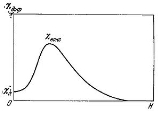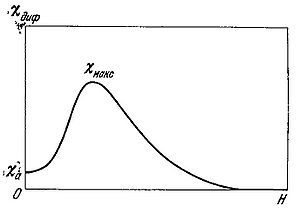
Aleksandr Stoletov
Encyclopedia
Aleksandr Grigorievich Stoletov was a Russian physicist, founder of electrical engineering
, and professor in Moscow University. He was the brother of general Nikolai Stoletov
.
After defending his dissertation he became a renowned scientist world-wide. He attended the opening ceremony of the physical laboratory in Cambridge in 1874, and represented Russia at the first World Congress of Electricity in Paris in 1881, where he presented his work on links between electrostatic and electromagnetic values.
Aleksandr Stoletov was the first to establish a school of thought of world importance. By the end of the 20th century his disciples had headed the chairs of Physics in five out of seven major universities in Russia
.
 His major contributions include pioneer work in the field of ferromagnetism
His major contributions include pioneer work in the field of ferromagnetism
and discovery of the laws and principles of the outer photoelectric effect
.
Achievements of Alexander Stoletov include:
Magnetism (1871–1872)
Photoelectric effect (1888–1891)
Other
Electrical engineering
Electrical engineering is a field of engineering that generally deals with the study and application of electricity, electronics and electromagnetism. The field first became an identifiable occupation in the late nineteenth century after commercialization of the electric telegraph and electrical...
, and professor in Moscow University. He was the brother of general Nikolai Stoletov
Nikolai Stoletov
Nikolai Grigorevich Stoletov was a general in the Imperial Russian Army. He was the brother of noted physicist Aleksandr Stoletov....
.
Biography
Alexander Stoletov defended his doctoral dissertation in 1872 and became professor at Moscow University a year later.After defending his dissertation he became a renowned scientist world-wide. He attended the opening ceremony of the physical laboratory in Cambridge in 1874, and represented Russia at the first World Congress of Electricity in Paris in 1881, where he presented his work on links between electrostatic and electromagnetic values.
Aleksandr Stoletov was the first to establish a school of thought of world importance. By the end of the 20th century his disciples had headed the chairs of Physics in five out of seven major universities in Russia
Russia
Russia or , officially known as both Russia and the Russian Federation , is a country in northern Eurasia. It is a federal semi-presidential republic, comprising 83 federal subjects...
.
Contribution to science

Ferromagnetism
Ferromagnetism is the basic mechanism by which certain materials form permanent magnets, or are attracted to magnets. In physics, several different types of magnetism are distinguished...
and discovery of the laws and principles of the outer photoelectric effect
Photoelectric effect
In the photoelectric effect, electrons are emitted from matter as a consequence of their absorption of energy from electromagnetic radiation of very short wavelength, such as visible or ultraviolet light. Electrons emitted in this manner may be referred to as photoelectrons...
.
Achievements of Alexander Stoletov include:
Magnetism (1871–1872)
- Stoletov was the first to show that with the increase of the magnetic field the magnetic susceptibility of iron grows, but then begins to decrease.
- Built the curve of the magnetic permeability of ferromagnetics, known as the Stoletov curveStoletov curveStoletov curve shows the dependence of the magnetic permeability \chi of ferromagnetics on the intensity of the applied magnetic field H. The curve is named after physicist Aleksandr Stoletov who analyzed in a long series of experiments the magnetic properties of iron rings in the period 1871–1872...
. - Developed two new methods for measuring magnetic properties of various materials.
Photoelectric effect (1888–1891)
- Studied the outer photoelectric effectPhotoelectric effectIn the photoelectric effect, electrons are emitted from matter as a consequence of their absorption of energy from electromagnetic radiation of very short wavelength, such as visible or ultraviolet light. Electrons emitted in this manner may be referred to as photoelectrons...
, discovered by Hertz in 1887. Published the results in the six works. - Developed quantitative methods for the study of the photoelectric effect.
- Discovered the direct proportionality between the intensity of light and the corresponding photo induced current (Stoletov's lawStoletov's lawStoletov's law for photoelectric effect establishes the direct proportionality between the intensity of electromagnetic radiation acting on a metallic surface and the photocurrent induced by this radiation. The law was discovered by Aleksandr Stoletov in 1888....
) - Discovered the Stoletov constant which defines the ratio between the intensity of the electric current and the gas pressure under the maximum current.
- Built the first solar cellSolar cellA solar cell is a solid state electrical device that converts the energy of light directly into electricity by the photovoltaic effect....
based on the outer photoelectric effect and estimated the response time of the photoelectric currentPhotocurrentPhotocurrent is the current that flows through a photosensitive device, such as a photodiode, as the result of exposure to radiant power.The photocurrent may occur as a result of the photoelectric, photoemissive, or photovoltaic effect....
. - Discovered the decrease of the solar cell's sensitivity with time (fatigue of solar cells).
Other
- Calculated the proportion between electrodynamic and electrostatic units, producing a value very close to the speed of lightSpeed of lightThe speed of light in vacuum, usually denoted by c, is a physical constant important in many areas of physics. Its value is 299,792,458 metres per second, a figure that is exact since the length of the metre is defined from this constant and the international standard for time...
.
Publications
Important published works of Alexander Stoletov include:- On the Kohlrausch's measurement of the mercuryMercury (element)Mercury is a chemical element with the symbol Hg and atomic number 80. It is also known as quicksilver or hydrargyrum...
unit of electric resistance; - Sur une méthode pour déterminer le rapport des unités électromagnétiques et électrostatiques;
- On the electricity of juxtaposition;
- On the critical state of bodies (4 articles);
- Actino-electric research;
- Ether and electricity;
- Essay on the development of our knowledge of gases;
- Introduction into acoustics and optics.

